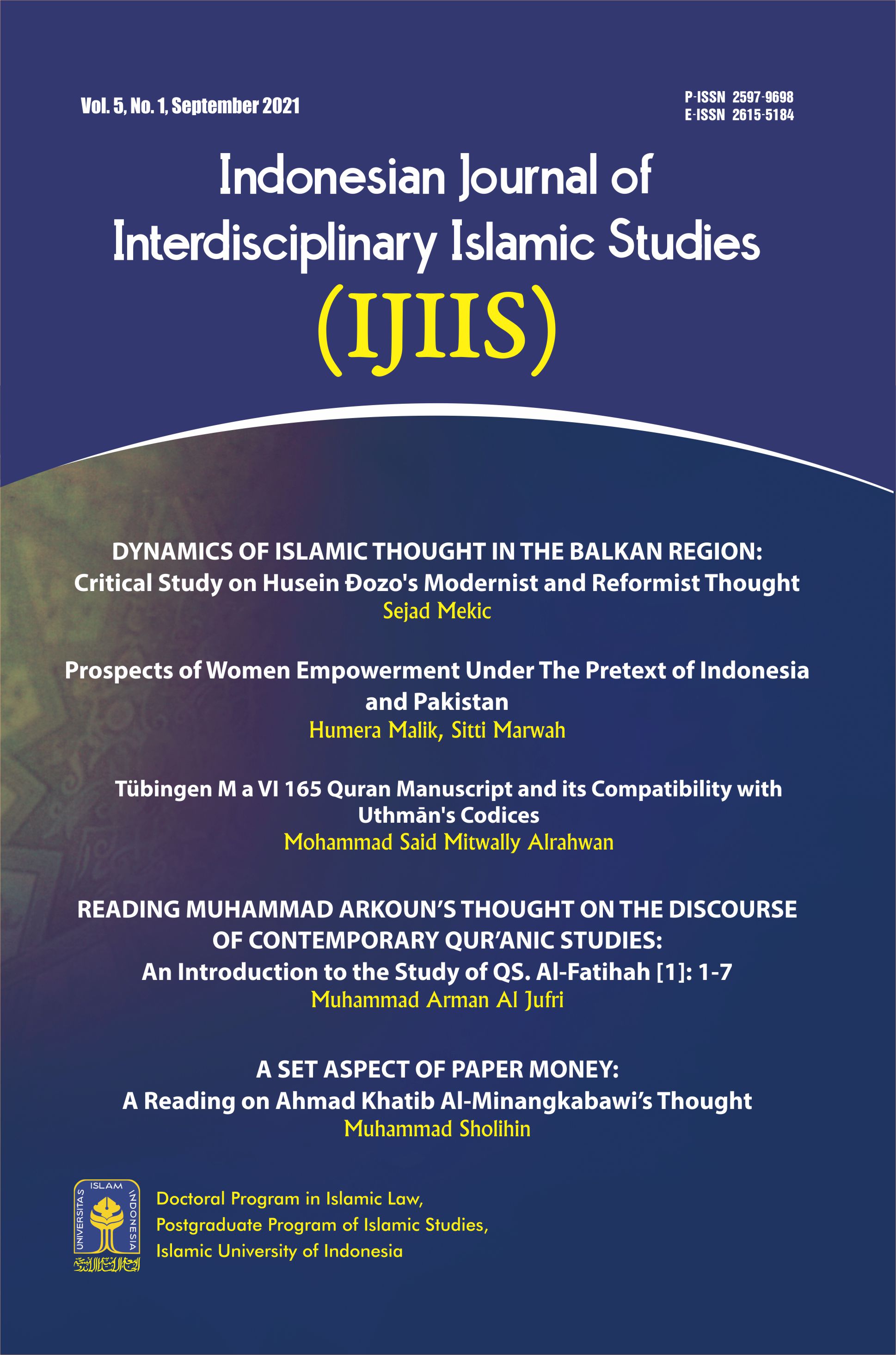Main Article Content
Abstract
Being one of the presumably earliest Quran manuscripts which may belong to the Umayyad era, Tübingen M a VI 165 is referred to as an ideal material for a paleographical study to resolve inquiries on earlier muṣḥafs written at the time of ʿUthmān and were elaborately described in Muslim traditional sources. This paper attempts to measure to what extent does Tübingen M a VI 165 Quran Manuscript reflect and adhere to what traditional Muslim sources reveal on earliest codices of ʿUthmān, particularly textual patterns, consonantal and vocal variations reflecting modes of recitation in addition to their scripts, overall and detailed verse numberings, to develop our vision on the transcription of muṣḥafs at the Umayyad period.
Keywords
Article Details

This work is licensed under a Creative Commons Attribution-ShareAlike 4.0 International License.
